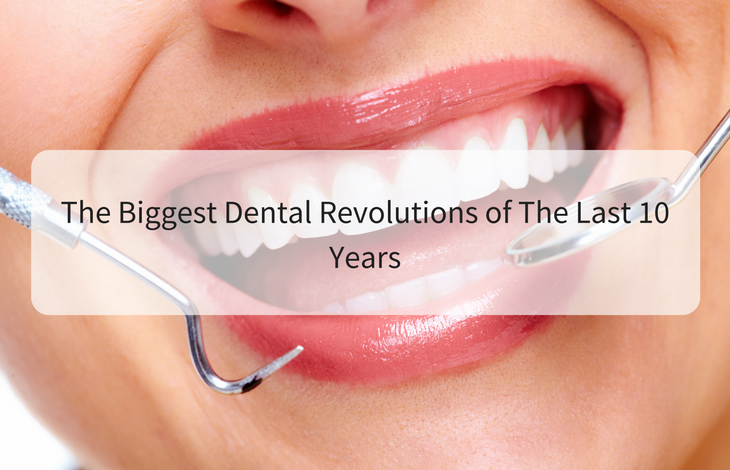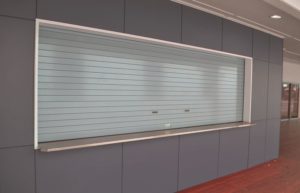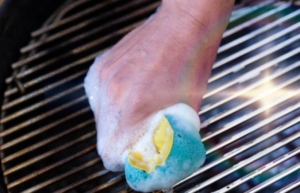The Biggest Dental Revolutions of The Last 10 Years

In modern culture, trips to the dentist are often faced with dread and trepidation. However, modern dentistry is far more advanced than it was 10 years ago. The last three decades have been responsible for the fastest rate of new technology development ever witnessed in human history. Dentistry has not been left behind in terms of adopting new technologies and gaining more knowledge. There are new tools, procedures and techniques that make it less painful for you to make a trip to the dentist.
Local anaesthesia is a significant part of dentistry, especially if you are coming in for a major dental procedure. While nobody wants to experience pain during dental procedures, one of the most frustrating things about anaesthesia is that it has a long-lasting effect, often lasting up to six hours after your dental procedure. Anaesthesia after effects includes numbness, reduced control of normal mouth functions and general grogginess.
The past decade has seen the development of the Oraverse injection by Novalar Pharmaceuticals. Oraverse is injected into the affected area after your procedure ends and it expedites the recovery process. Within two hours or less, you can regain your objectivity and easily communicate, eat and drink. Oraverse ensures that you can recover your productivity after your dental procedure.
According to historians, dental braces – as we know them- were first used in the 18th century. They are used to straighten teeth, especially in childhood. Teeth that are not straight pose oral health concern since they leave significant parts of your gum exposed to external factors. They also minimise the effectiveness of your bite, which hinders proper chewing.
While braces have been improved over the centuries to increase their comfort levels and effectiveness, over the past decade, they were completely revolutionised and re-imagined with the development of Invisalign. Invalisign is an invisible and lightweight dental brace that is almost invisible to others. Braces have long been (unfairly) associated with social anxiety and ‘un-coolness’ which causes discomfort and unease in people that need to wear them. Since Invisalign is not as easily visible, it might be more readily accepted by younger children. Invalisign has also been proven to be more effective regarding aligning crooked teeth within a shorter period than the metallic braces.
People who engage in contact sports, whether professionally or on an amateur level, always face the risk of sustaining accidental dental injury. This is especially true for those in more aggressive sports such as boxing and rugby. Mouth guards have been used in sports for many decades, but over the past ten years, there has been a significant improvement. Mouth guards can now be customised to your tooth structure and type of sport to offer better protection.
Dental x-rays have also been significantly improved over the past ten years. One of the biggest fears that patients – dental or otherwise – have concerning x-rays is the high amount of radiation that one is exposed to. Digital x-rays have been introduced in the dental industry within the past ten years, and they reduce the amount of radiation by up to 90% when compared with ‘normal’ x-rays. They are also instantaneous, with zero wait times since the results are immediately transmitted to a computer screen.
One of the most feared mental images is a drill-wielding dentist. Drills are an important part of dentistry since the enamel tooth covering is quite hard. When treating cavities, drills are used to create ‘pathways’ for the clearing of decayed tooth matter and the application of filling. Air abrasion tools have been introduced to dentistry in the past decade, and they replace the functions of drills in most cases involving small cavities.
Using pressurised air jets and aluminium oxide pellets, dentists can clear the damaged tooth material and fill a cavity without using a drill. The best part is that air abrasion is completely painless! It doesn’t require any anaesthetic. This should make trips to the dentist less scary, especially for small procedures.
Laser surgery has also been more widely adopted by dentists over the past ten years. Just like air abrasion, laser surgery is a painless procedure which reduces the apprehension that most people have concerning dental surgery. The cauterising effect of laser on human tissue also ensures that you can’t get infections after the procedure.
Apart from the revolutions already seen, there are other technologies still in the research and testing stages such as 3D printed replacement teeth, which should further improve the dental industry.
Read Also:







